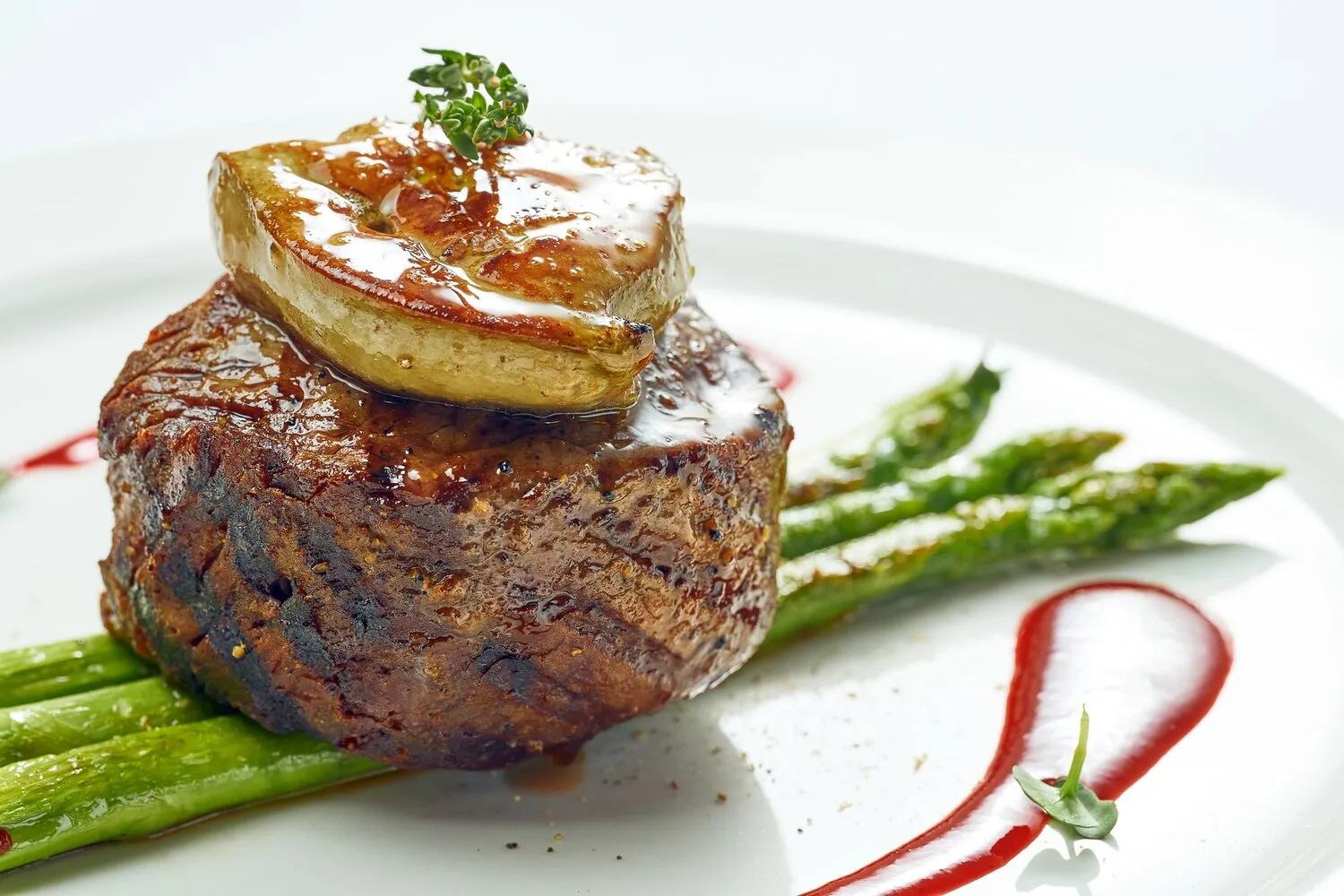
Mike's Prime Rib
Slow roasted and seasoned prime rib served with au jus and creamy horseradish.
Nutrition Facts
* The % Daily Value (DV) tells you how much a nutrient in a serving of food contributes to a daily diet. 2,000 calories a day is used for general nutrition advice.
MR MIKES Steakhouse Casual
Prime rib, a cut from the primal rib, gained popularity in the US as steakhouses evolved. Slow roasting techniques were refined to maximize tenderness and flavor, reflecting a focus on high-quality beef and simple, elegant preparation. The accompaniments, au jus and horseradish, are classic pairings dating back centuries in European and American cuisine, enhancing the richness of the beef.
Prime rib is often associated with celebratory occasions, family gatherings, and fine dining experiences in American culture. It represents a commitment to quality ingredients and a shared experience of indulgence.
Celebratory Meal
Prime rib is a popular choice for holidays like Christmas, Thanksgiving, and special events such as anniversaries and birthdays, signifying a special and memorable occasion.
Steakhouse Staple
It is a quintessential offering in steakhouses across America, often seen as a premium dish showcasing the restaurant's expertise in meat preparation and quality.
Family Gatherings
The large size of a prime rib roast makes it ideal for sharing, fostering a sense of community and togetherness during family meals.
The dominant flavors of Mike's Prime Rib are rich, savory beef, complemented by the salty and umami notes of au jus, and the sharp, creamy heat of horseradish.
The prime rib itself offers a deep, roasted beef flavor, with rendered fat contributing to a melt-in-your-mouth texture and rich taste. The au jus provides a concentrated beefy essence, often with hints of herbs and aromatics used during roasting. The creamy horseradish delivers a pungent, spicy kick that cuts through the richness of the beef, balancing the overall flavor profile.
Internal Temperature is Key
Use a meat thermometer to accurately gauge the internal temperature. Aim for 120-130°F for rare, 130-140°F for medium-rare, and 140-150°F for medium. Remember carry-over cooking will continue to raise the temperature after removing from the oven.
Resting is Essential
Allow the prime rib to rest for at least 20-30 minutes before carving. This allows the juices to redistribute throughout the roast, resulting in a more tender and flavorful final product.
Quality of Beef Matters
Choose a prime rib roast with good marbling (flecks of fat within the muscle). Marbling enhances flavor and tenderness during cooking.
Horseradish Preparation
For the best creamy horseradish, start with freshly grated horseradish root. Combine it with sour cream or crème fraîche for a balanced flavor and texture. Adjust the ratio to your spice preference.
Explore additional Steakhouse dishes and restaurants
Explore SteakhouseDiscover top dining spots and culinary experiences in Prince Albert.
Explore Prince AlbertLearn more about the food culture, restaurant scene, and culinary heritage of Canada.
Explore Canada